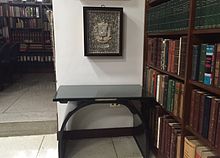In the government of Pérez Jiménez, Venezuela’s debt grew more than 25 times and went from 175 million to more than 4,500 million bolivares in just 5 years (approximately 15 billion dollars in 2018). The malaise over the debts of Venezuela reached the barracks and the national business. Pérez Jiménez responded that: “there is no debt, but commitments”. The Finance Minister failed to convince Pérez Jiménez to order the cancellation of debts. As of 14 January 1958, the Venezuelan business community decided to divorce itself completely from the regime, nine days before the collapse of the government. The military dictator Pérez Jiménez was forced out on 23 January 1958. In an effort to consolidate a young democracy, the three major political parties (Acción Democrática (AD), COPEI and Unión Republicana Democrática (URD), with the notable exception of the Communist Party of Venezuela) signed the Puntofijo Pact power-sharing agreement. The two first parties would dominate the political landscape for four decades.

As a result of the debt that Marcos Pérez Jiménez had left, an economic adjustment program was necessary in Venezuela. The Economic Recovery Plan of 1960 was formulated by Tomás Enrique Carrillo Batalla. The construction industry was revitalized through the “rediscount” of the Central Bank of Venezuela. The Economic Recovery Plan fulfilled its objectives and in 1964, Venezuela was able to return to an anchored exchange rate, with free purchase and sale of foreign currency. This system lasted until the Venezuelan Black Friday of 1983, although the model was already running out at the end of the seventies. The consolidation of the democratic system and the dissipation of fears of political radicalization of the country contributed to normalize the demand for foreign currency, stabilizing the parallel exchange rate.
For much of the period between 1950 and 1973, the Venezuelan economy was characterized by its stability and sustained strength, factors that contributed decisively to being able to maintain a fixed exchange rate without major inconveniences. In the period of Carlos Andrés Pérez (1974–1979, his first time as president), as a result of the Arab-Israeli war (the Yom Kippur War), the average price of a barrel of oil went from 3.71 to 10.53 dollars and continued to rise to exceed 29 dollars in 1981. The income of the public sector went from 18,960 million bolivars in 1973 to 45.564 million in 1974. The economic bonanza also had the characteristics of an economic bubble, but Venezuelans remember the “Ta barato, dame dos”. The increased inflow of funds to savings and loan entities and mortgage banks allowed an increase in the mortgage loan portfolio, which also tripled. In general, Venezuela was a prosperous country in the governments of Rómulo Betancourt (1945 – c. 1948; 1959–1964), Rafael Caldera (1969–1974; 1994 – c. 1999) and Carlos Andrés Pérez (1974–1979; 1989 – c. 1993). In 1975 the iron industry was nationalized and the following year the oil industry, creating Petróleos de Venezuela, S.A. (PDVSA). Both Caldera and Pérez partially broke with the Betancourt Doctrine.
